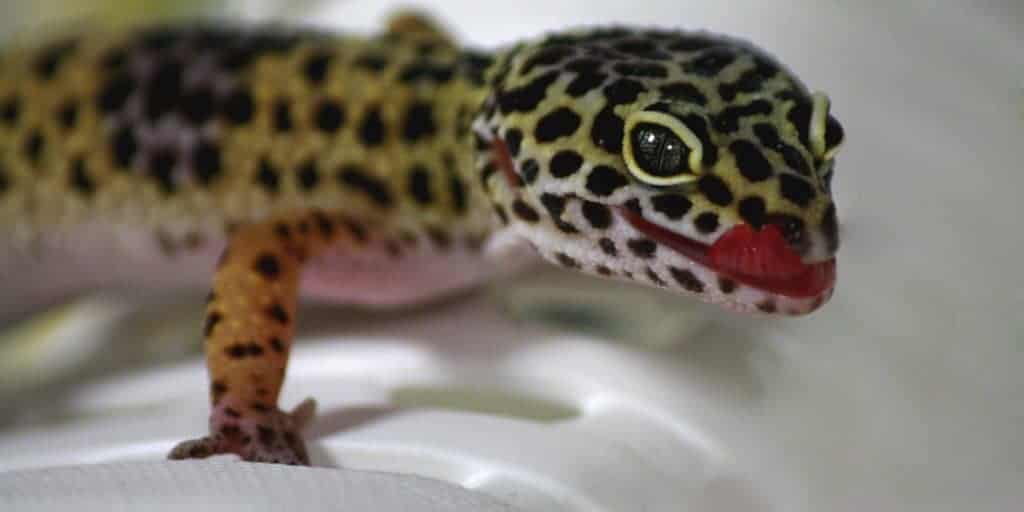Leopard geckos are reptiles native to Pakistan and Afghanistan. The specie also exists in some parts of India and Iran. Being nocturnal lizards, they are more active at night. Leopard geckos also have a docile and placid nature.
Many people want to keep leopard geckos as pets, but they ask many questions about their diet, handling, lifespan, and morphological structures, including their teeth. So, the question is “do leopard geckos have teeth?” At birth, a leopard gecko has 100 teeth, which they replace within a few months.
Leopard geckos are polyphyodonts that replace their 100 teeth every few months. Research shows that a common leopard gecko found in Afghanistan and Pakistan can replace their teeth every 3-4 months.
What is a Leopard Gecko Tooth Structure?
A common leopard gecko has rows of tiny, conical teeth, which line both the premaxilla and maxilla bones. These bones are located in the upper jaw area. Likewise, the lower jaw contains the dentary bones.
Most leopard geckos have 9-13 teeth attached to the premaxilla bone. The rest of the teeth have a variable structure, which is either attached to the dentary bones or maxilla. Usually, the upper jaw has more teeth than the lower jaw.
In general, leopard geckos have 100 teeth. However, some species have 50 or more teeth. The reason why some of them have less than 100 teeth is not known to scientists.
However, the general view of most researchers is that this is caused by mutations in the genetic structure. Moreover, a leaf-tailed leopard gecko has even more teeth, which are around 300.
Why do Leopard Geckos Replace Teeth?
Leopard geckos are polyphyodonts, which means they replace their teeth. On the other hand, diphyodonts are those animals that have two sets of teeth.
Leopard geckos are unique species with these characteristics. They grow new teeth behind the old ones in the jaw and then push them forward until the old ones move to the front of the mouth and fall out.
Typically, teeth replacement is a process that occurs every few months. The general view is that the process occurs every 3-4 months. Researchers think that some factors like the lifespan and dietary wear that occurs continuously on the teeth of leopard geckos lead them to have multiple sets of teeth.
This process occurs automatically and some scientists believe that the replacement process is initiated by stem cells, but there is no solid evidence behind this claim.
Usually, teeth grow beneath the jaw surface where they push through the tissue and shift the older ones forward. As a result, there occurs the displacement of the older teeth, and the new ones begin to position themselves in the jaw.
Conclusion
Leopard geckos are nocturnal reptiles that have teeth adopted in a specific way, which enable them to easily consume insects, such as crickets, waxworms, super worms, and roaches.
Again, they have 100 teeth, which they replace every few months with new ones. The primary reason is their continuous dietary behavior that causes wear and tears in the teeth structures. That’s why they are known as polyphyodonts.




